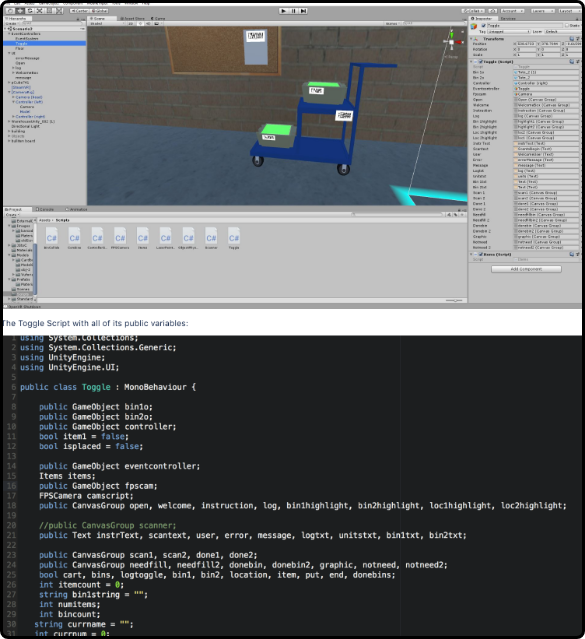
The Warehouse VR/AR started out as a proof of concept designed to put Manhattan at the forefront of upcoming warehouse technology. Although widespread usage of AR devices in the warehouse does not exist yet, Manhattan wants to be the first to pioneer the technology when the market is ready for it.
To start thinking about user scenarios and plan ahead, we started developing what would be shown in the HUD that workers and managers would see. However, we had to have some way to test these UIs without being able to actually use the physical technology inside a real warehouse. That leads us to the problem I solved.

I developed user scenarios based on existing processes in the warehouse. In the warehouse industry, efficiency and speed are some of the most important factors to success, so how do I increase efficiency? I needed to design UIs that would reduce time taken on menial tasks (such as looking up and down from clipboards) as well as reduce human error.
Once designed, the only way to test was to build everything virtually. I used the Unity game engine, HTC Vive VR hardware, coded in C#, 3D modeled in Maya and pulled other models from free resource bases on the internet.
Finally, with several scenarios ready, I presented and tested with other people in the company, from fellow UX teammates to the high up department chairs.

2
I then set about developing the scenes in Unity. This was a big learning process for me, but I was able to complete everything I needed to thanks for Unity’s extensive documentation.
Considering that Manhattan didn’t really have the technology I was really testing, Unity was a pretty good solution. However, VR posed a problem for some people while they were testing my program. Within a VR setting, moving and walking can be disorienting, so most movement was confined to teleportation. Such disconnects with reality were present, but given we were working with VR and not true AR, these problems were unavoidable.
Overall, I tried to make the experience as “real” as possible, with realistic models and height constraints.
The demo was received positively, and although there will be no more development on it as of now, it definitely opened the eyes of many to how Manhattan can be at the forefront of AR technology when the time comes.